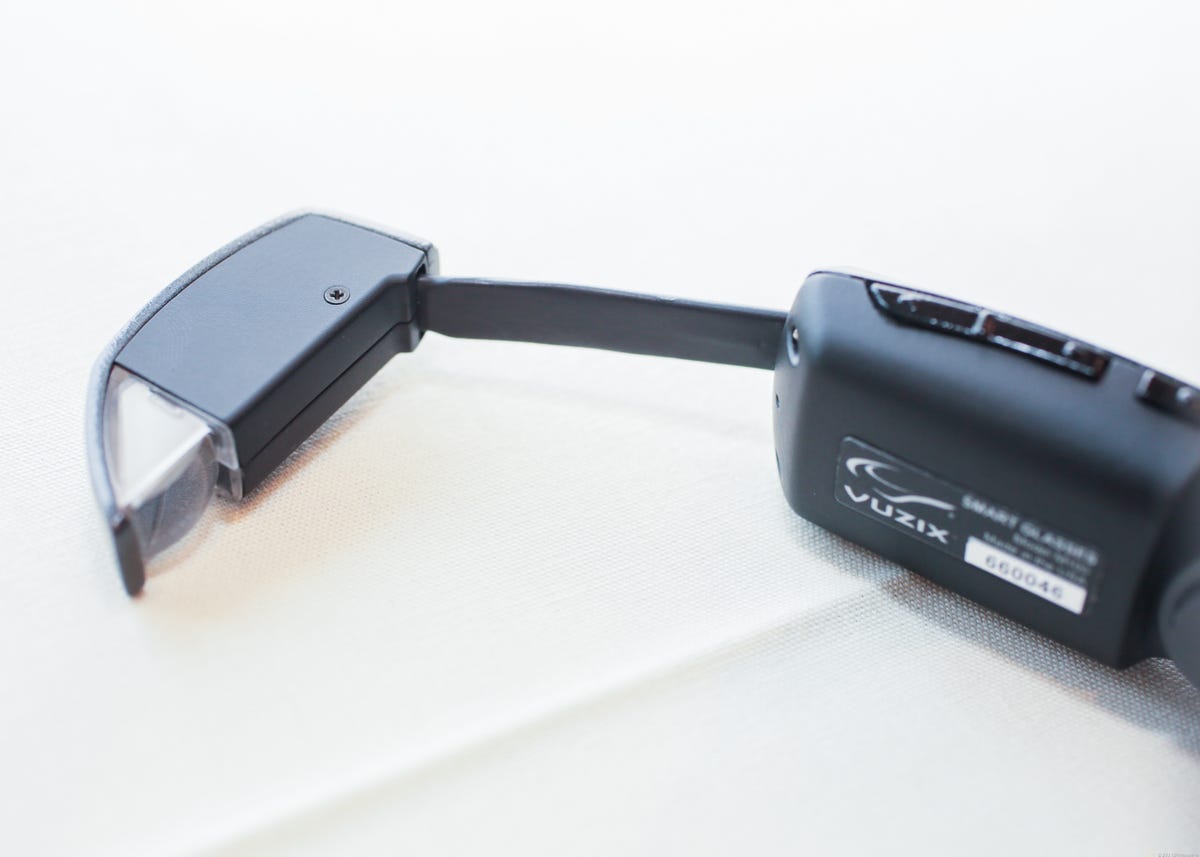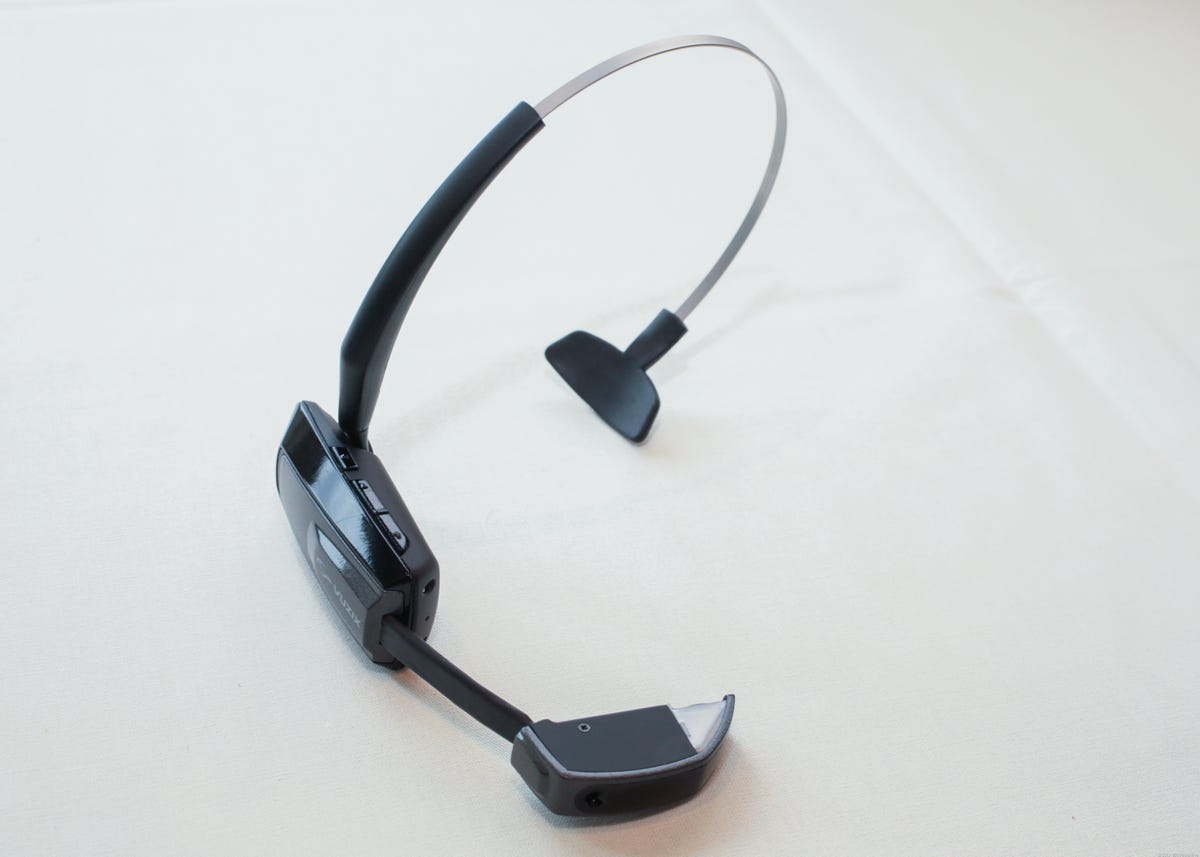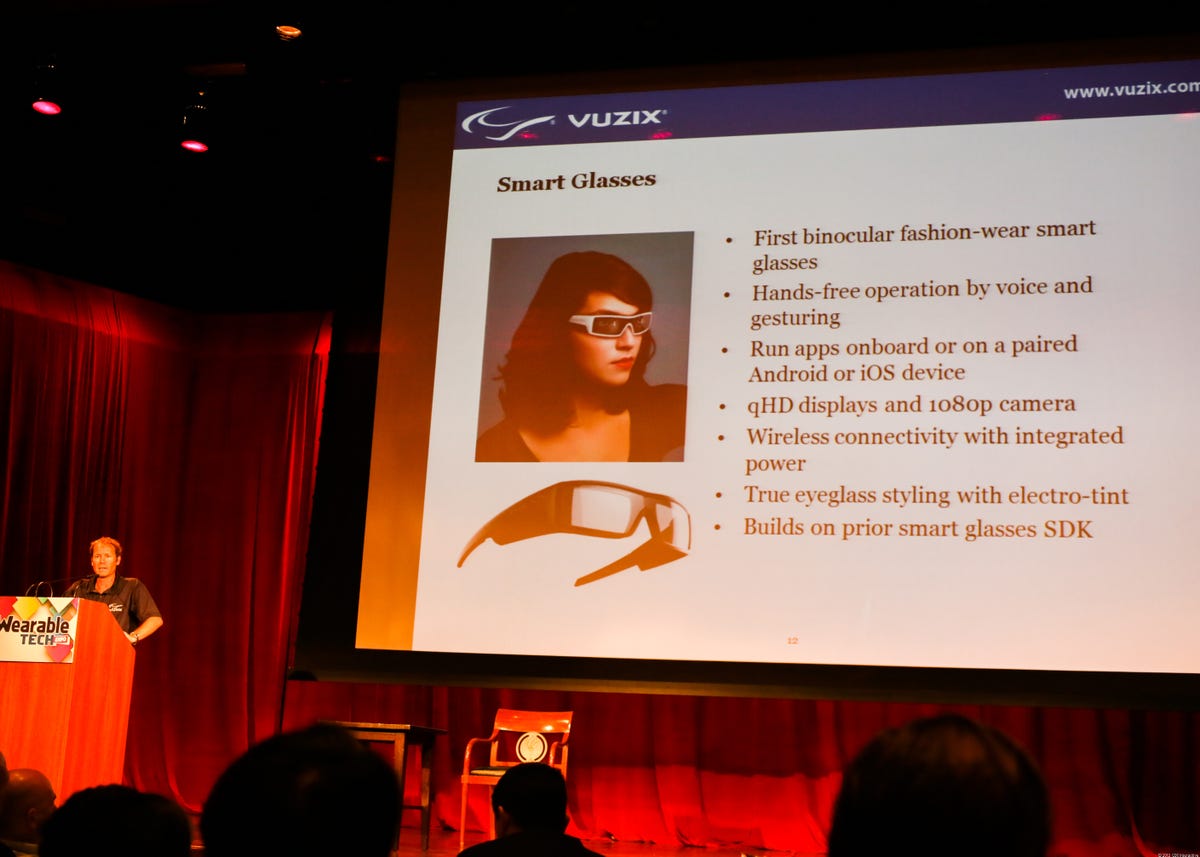Google Glass may be the only big wearable eyepiece in town, but most people can’t even get their hands on one. For the rest, maybe the Vuzix M100 can be an interesting alternative. Or, maybe, Vuzix can even offer aspects Glass doesn’t.
I’ve seen the Vuzix M100 Smart Glasses before, at CES 2013 in January. The headset made an appearance at the Wearable Tech Expo in New York City this week. Its capabilities aren’t exactly the same as Glass’, and neither is the build; instead of a metal visor with a transparent eyepiece attached, the M100’s current form resembles an old-school boom headset with headband, except instead of a boom mike you have an eye-boom.


Sarah Tew/CNET
The M100’s projected image isn’t much different in feel from Google’s, but the headband can be flipped so that the eyepiece is on either eye — a nice touch. Trying it on, however, I found that this admittedly early unit felt a little floppy, and the opaque eyepiece seemed to lower directly over my eye versus hovering above it like Glass. Then again, I may have been using it wrong.


Sarah Tew/CNET
If you’re curious about the specs, which don’t tell a lot of the story of how the Vuzix will actually feel when it’s fully ready to go, read them here. It’s got a 16:9 WQVGA-level display, 1GB of RAM, 4GB of storage, a microSD card slot, an Android-based onboard operating system, and standard sensors (accelerometer, gyro, compass). It can connect via 802.11n Wi-Fi or Bluetooth to iOS or Android, and is designed to run both online and off. The battery life is rated for only 2 hours of use with the display, which sounds a lot like Glass’ battery woes. It can record 720p video. It even has the same onboard processor as Google Glass, but lacks its clever touch-strip, going with buttons instead.


Sarah Tew/CNET
Vuzix has development kits for the M100 going out now for around $1,000, with the end of 2013 targeted for consumer versions. Expect a high price, but not as high as Glass’; more like $500.


Sarah Tew/CNET
This isn’t the end of the Vuzix optical dream; in fact, Vuzix had been making wearable visor-screens well before Glass was a twinkle in Google’s eye. A brief demo concept of Vuzix’s next project shows the spirit of its vision: they’re glasses with transparent overlaid displays over both eyes. Forget Google’s concept of keeping screens separate from reality — Vuzix wants full augmented overlay.
Still undetermined: who will actually be lining up to buy and wear Google Glass and its Glass-alikes. And who will be developing apps for all of these platforms.



